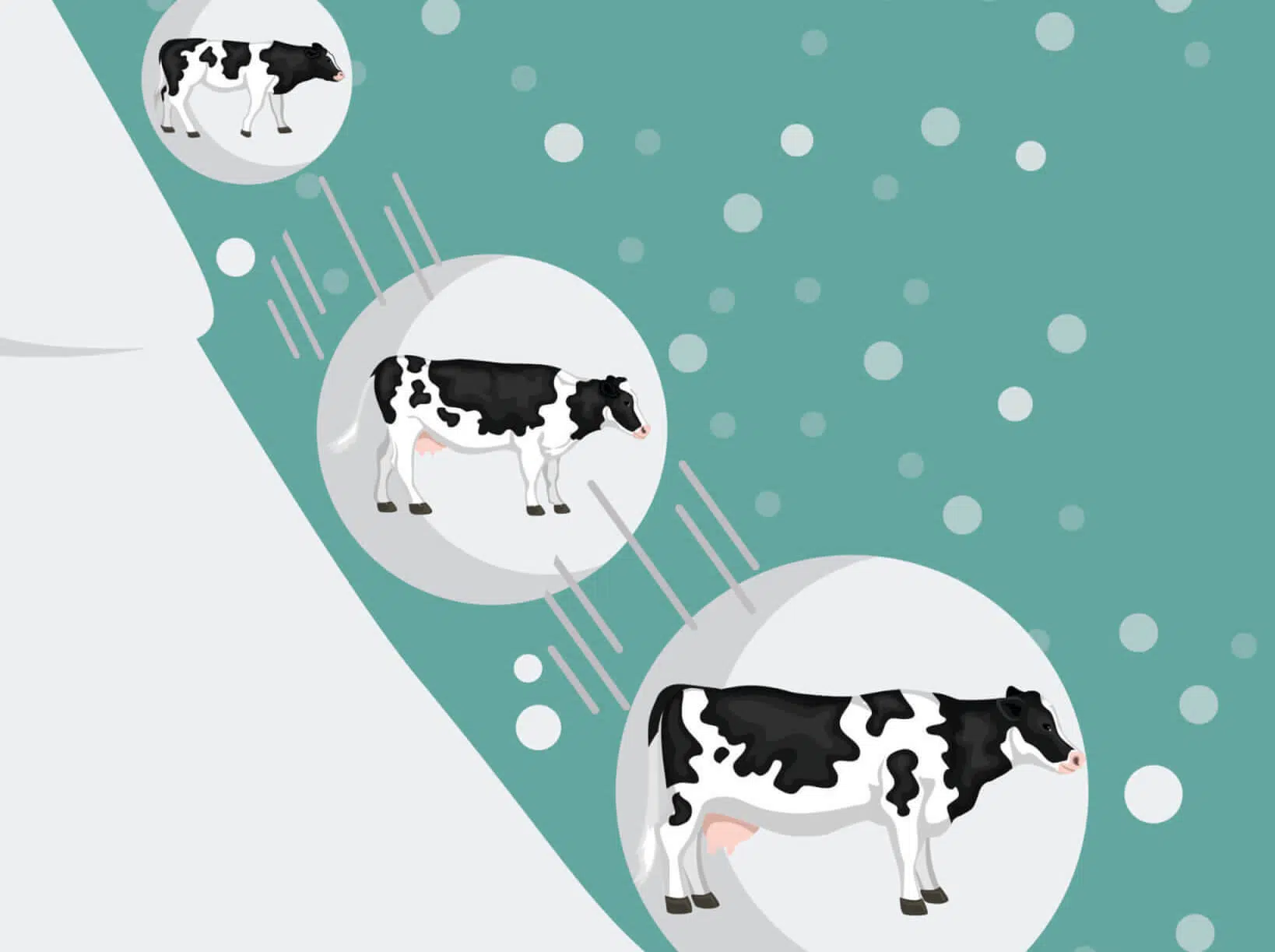Precision farming holds the key to the future. The future of a dairy herd lies with the heifers that will replace your existing herd. There needs to be a continuous drive to improve fertility on-farm, to ensure that our milking cows fall pregnant. At the end of gestation, we go through one of the most important phases in the production cycle of the cow, namely the dry period. This phase offers a tremendous opportunity to ensure the future health and profitability of the milking cows. After successfully managing colostrum delivery and the calving process, we focus on the critical milk phase with the goal of rearing strong, healthy heifer calves. By two months old, our calves are weaned, and then … our good intentions seem to lose momentum. But this is the time to focus on heifer rearing success, on investing in the future of the herd.
There is an assumption in the industry that we can select a plan and then just wait 24 months for the heifers to join the productive herd. This is partly true, but we may be missing out on the massive benefits of a continued focus on heifer rearing and nutrition. Most heifers are raised either on veld or on a pasture base with little or no additional mineral supplementation. The idea is that heifers can get all they need to keep growing from these raw materials. While there is a contribution of trace minerals from the raw materials heifers eat, an increased level of trace mineral supplementation, especially from an organically complexed source, can hold the key to unlocking improved performance once the heifers are in milk. (Read here how heifer calves can benefit from improved trace mineral status.)
Essential nutrients
Heifers are still growing well into their first lactation. This requires large amounts of nutrients. Essential nutrients like trace minerals are used throughout the heifer’s system as integral components of enzymes and the immune system. Key trace minerals required for future production are zinc, selenium, manganese, copper, and iron.
- Due to the role of zinc in maintaining epithelial integrity and cell repair and division, this trace mineral is often associated with hoof and mammary health, but its effects are far more wide-reaching. In fact, zinc is used in numerous enzyme systems for energy metabolism, protein synthesis, and immune response.
- Selenium is well known for supporting and improving cow immunity due to its function as part of the enzyme glutathione peroxidase, which reduces superoxide radicals.
- Manganese is associated with fertility due to its role in cholesterol synthesis, which is needed to produce the reproductive hormones. It is essential to supplement manganese due to its relatively low bioavailability and absorption from raw materials.
- Copper is also essential, although its importance is often overlooked. Copper is needed for white blood cell activity for immune function and, as such, should form an integral part of heifer mineral supplementation.
- Lastly, iron should not be overlooked in view of its role in oxygen transportation, as well as energy metabolism and immune function.
Understanding how these essential trace minerals are used can help you practise precision farming. By strategically feeding trace minerals to heifers, we can support growth and immunity to set heifers up for a productive future in the herd.
Research into trace mineral supplementation for heifer rearing success
Studies have shown a wide range of benefits from supplementing a more functional source of trace minerals for heifers. A significant response is seen in the reduced incidence of claw lesions in heifers who received a complexed source of trace minerals during rearing (Drendel et al., 2005). This is especially valuable in herds plagued by infectious lesions such as digital dermatitis (hairy heel wart). By implementing strategic supplementation for your heifers, you will be able to reduce the incidence of claw lesions in the milking herd over time. Somatic cell counts can also be reduced in first-lactation heifers compared to groups that are only supplemented with a low level of inorganic trace minerals.
Lameness and udder health are two main culling criteria and, therefore, they affect the survival rate of dairy cows. By reducing inflammatory events associated with lameness and udder infections, immune system activation is reduced. Immune activation is very energy expensive and any reduction results in more energy in the system. This energy-paring effect allows improved lactation and more rapid repair of the reproductive system after calving. Quicker recovery from calving leads to earlier cycling, improved fertility numbers, tighter seasonal breeding, and reduced days in milk. This is where we start to see the snowball effect of good choices during the heifer-rearing period.
What’s in it for the farmer?
A higher survival rate of first-lactation heifers should have you convinced of the value of precision nutrition for your heifers. If not, improved milk production and earlier conception during the breeding season should have you reevaluating your heifer-rearing protocol (read here how to optimise immunity for lifetime performance, as published in Volume 10, Issue 6 of Red Meat/Rooivleis). Precision farming may sound daunting, but it may be as simple as just doing one thing differently with your heifers to move the future of your herd forward.
Download the full article in PDF format here, as published in the August 2021 issue of The Dairy Mail.
Technical adviser: Ruminants










